Everyone knows that customer retention is vital to building a successful company. What is perhaps less straightforward is what exactly goes into earning your customers’ trust and, subsequently, their continued business.
Zendesk’s CX trends report noted that 62% of customers point to price as the driving factor of their brand loyalty, with customer service (57%) and product/service offerings (54%) following closely behind. Additional factors mentioned included convenience of purchase or use (45%), brand reputation (34%), and personalization and promotions (27%).
In other words, customer loyalty doesn’t just hinge on one team or initiative. Instead, everyone at a company plays a vital role in keeping customers happy, engaged, and successful.
The importance of customer success management
Although all departments play a role in ensuring customer satisfaction, companies can benefit from a unified customer success strategy — the approach a business takes to helping customers achieve success through the use of its products or services.
Customer success managers (CSMs) examine relationships holistically, ensuring that all aspects of the user experience work together to move customers toward their goals.
CSMs often partner directly with customers throughout onboarding, providing product education and support. They also monitor customer touch points and interactions to identify expansion opportunities and potential risk factors for churn and act as the voice of the customer (VOC) in discussions with other teams within the organization.
One of the ways that CSMs stay on top of all of the moving parts in a customer relationship is through the use of customer success software.
What is customer success software?
Customer success software is a tool that collects and consolidates customer data like contact information, communications history, product engagement stats, and feedback responses in one place, providing your team with a comprehensive view of your customers.
Having all your customer information in one place makes it easier for CSMs to monitor customer sentiment, identify trends, and proactively step in when a customer is struggling.
Benefits of using customer success software
Although stand-alone products might work for some teams — a help desk for support, an email campaign tool for marketing, a survey tool for the product team, etc. — CSMs need something that is all-inclusive.
Customer success platforms:
Increase visibility. Most teams tend to operate in parallel, making it hard for a CSM to know what interactions a customer has had with their company. Customer success management software centralizes customer data, making it easier to see both the positive and negative effects of each touchpoint.
Improve customer experience (CX) and engagement. With data comes context. Customer success software provides your team with the information needed to provide personalized outreach and support, which can strengthen customer relationships and encourage brand loyalty.
Reduce churn. Customer success platforms come with real-time indicators of customer health, allowing your team to turn bad experiences around before customers cancel their accounts.
Boost efficiency. Automation within success software tools can initiate playbooks, assign tasks, send out communications, and notify you of opportunities, giving your team more time to spend working with customers.
Customer success systems: Key features
Though the specific features your company may need can differ depending on your industry and customer base, here are some basic features to look for in a success tool:
Customer dashboards or profiles: You want to ensure that each customer has their own dashboard or profile page that lets you get a bird’s-eye view of your relationship, with the ability to drill down as needed.
Communication management tools: Most customer success solutions will offer a way to manage two-way communication such as email, social media, live chat, etc. Depending on your strategy, you may also want a platform that incorporates proactive messaging or the ability to create email or text messaging campaigns.
Content creation and management tools: A large part of customer success is providing client education, so it may be beneficial to have the ability to create educational blog posts or videos to help with things like customer onboarding.
Self-service channels: Continuing on the education theme, adding self-service resources like a knowledge base can improve customer satisfaction and ease the load on your support team.
Feedback collection: Look for a platform that can collect and analyze customer feedback. Some popular measurements seen in customer success tools include customer satisfaction (CSAT), customer effort (CES), and Net Promotor (NPS) scores.
Customer segmentation tools: Segmentation tools allow you to segment your customer lists to provide more targeted, personalized support and communication.
Automation capabilities: Many tools allow you to automate activities, such as sending out messaging at specific points in the customer journey or assigning tasks to CSMs when a customer is at risk of churning.
Integration support: To have the most comprehensive view of your customers, it’s important that your success software can integrate with the rest of your tech stack. This includes things like CRMs, ecommerce software, etc.
Analytics. The most important aspect of any customer success system is the ability to analyze all the data in its repository. Your software choice should have the ability to create detailed dashboards. It may also offer specialized metrics such as a customer health score — a numerical rating indicating how likely a customer is to churn based on factors such as engagement and feedback.
The 8 best customer success software tools for growth and retention
Help Scout
ChurnZero
Planhat
HubSpot
Totango
Custify
SmartKarrot
Gainsight
1. Help Scout
Best customer success software for improving customer communication.
Help Scout is a customer communications platform that helps small and mid-sized businesses have better customer conversations. Offering valuable features like a shared inbox, proactive messaging, feedback collection, reporting, and a knowledge base for self-service, Help Scout is an excellent option for those looking to spur growth while building lasting customer relationships.
Centralized customer communications
Help Scout allows you to manage all of your customer communications — regardless of channel — from within a shared inbox. Assign conversations to individual contributors or teams, stay organized with conversation tags, and keep answers to frequently asked questions close at hand with saved replies.
Customer profiles are visible within all conversations, providing the information you need to provide contextual support and a personalized experience. Integrate other systems from your tech stack with Help Scout to expand visibility and create a 360° view of your customers. Don’t see the integration you’re looking for? Use our APIto build your own.
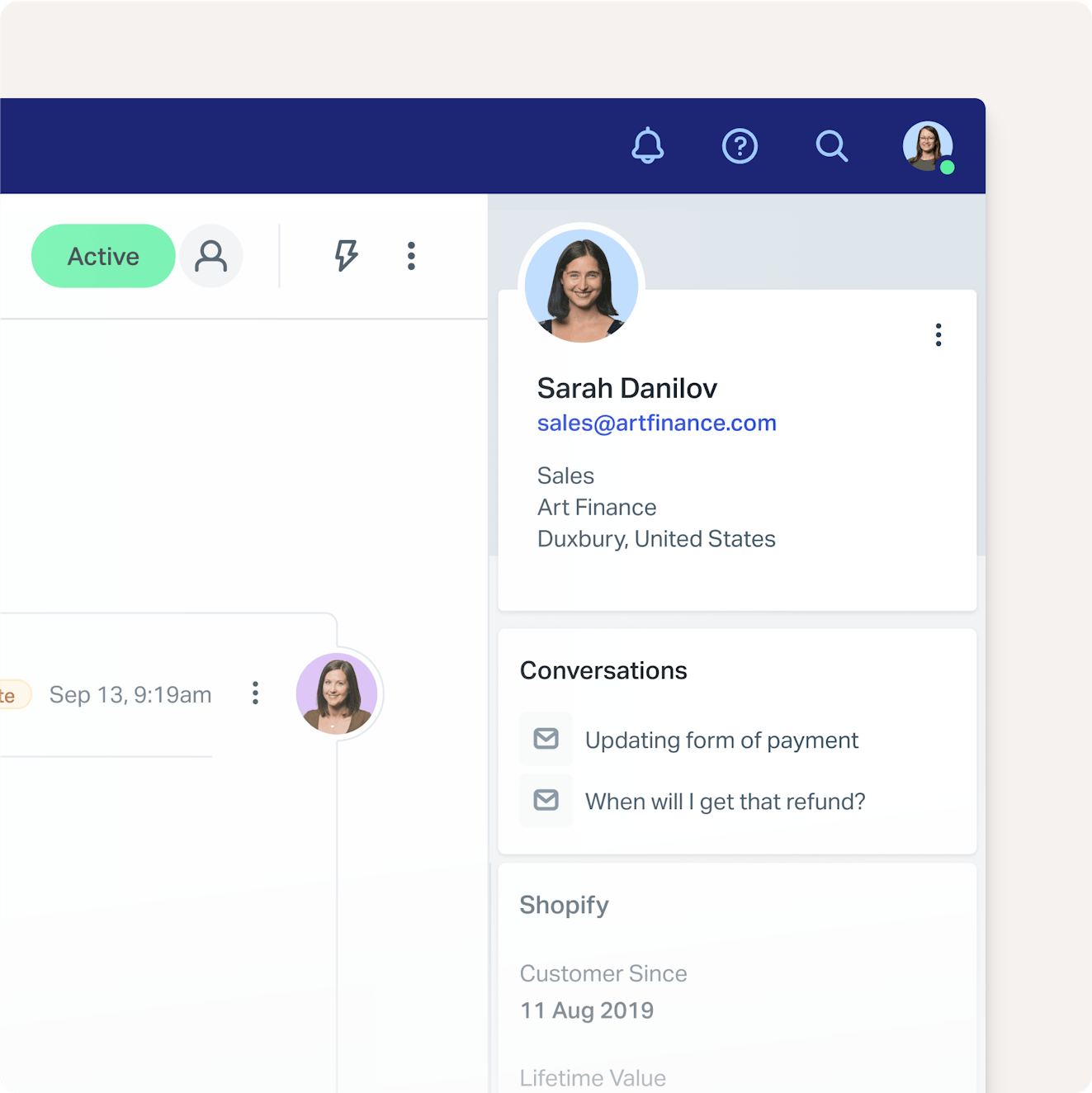
Customer success managers can leave notes on conversations following customer calls, @mention teammates for advice, and create workflows to automate tasks like conversation assignments or adding tags.
Help Scout’s Inbox natively manages email, Facebook Messenger contacts and Instagram DMs, and live chat. Additional channels like voice or SMS can be tracked in Help Scout via integrations with voice tools like Aircall or automation tools like Zapier.
The platform also has AI tools built in to help when working with customers. AI Summarize can help you get caught up on long conversations quickly, AI Assist can help you polish your copy before hitting send, and AI Drafts can generate replies to customer emails that are based on previous conversations and your help center documentation. Just review and hit send.
Connect with the right customers at the right time
Help Scout’s engagement widget, Beacon, helps you connect with your customers at high-impact moments. You can embed a Beacon anywhere on your website or within your app, allowing customers to initiate a live chat, submit a support request, or look up a knowledge base article from within the customer experience.
But Beacon doesn’t stop there.
Beacons can also help you proactively communicate with your customers and website visitors by using Help Scout’s Messages feature. Messages let you surface targeted communications to your audience using conditions like date, URL, time on page, scroll behavior, or other customer properties that your team may be using in Help Scout.
Launch a live chat window or pull up documentation in areas of your product where customers often get stuck, or deliver messages for things like renewal discounts, referral programs, or product updates — the options are endless!
While other platforms have messaging capabilities, Help Scout is more affordable. All Help Scout plans come with up to 2,000 unique viewers per month — an amount that is twice what other leading platforms offer for roughly the same price.
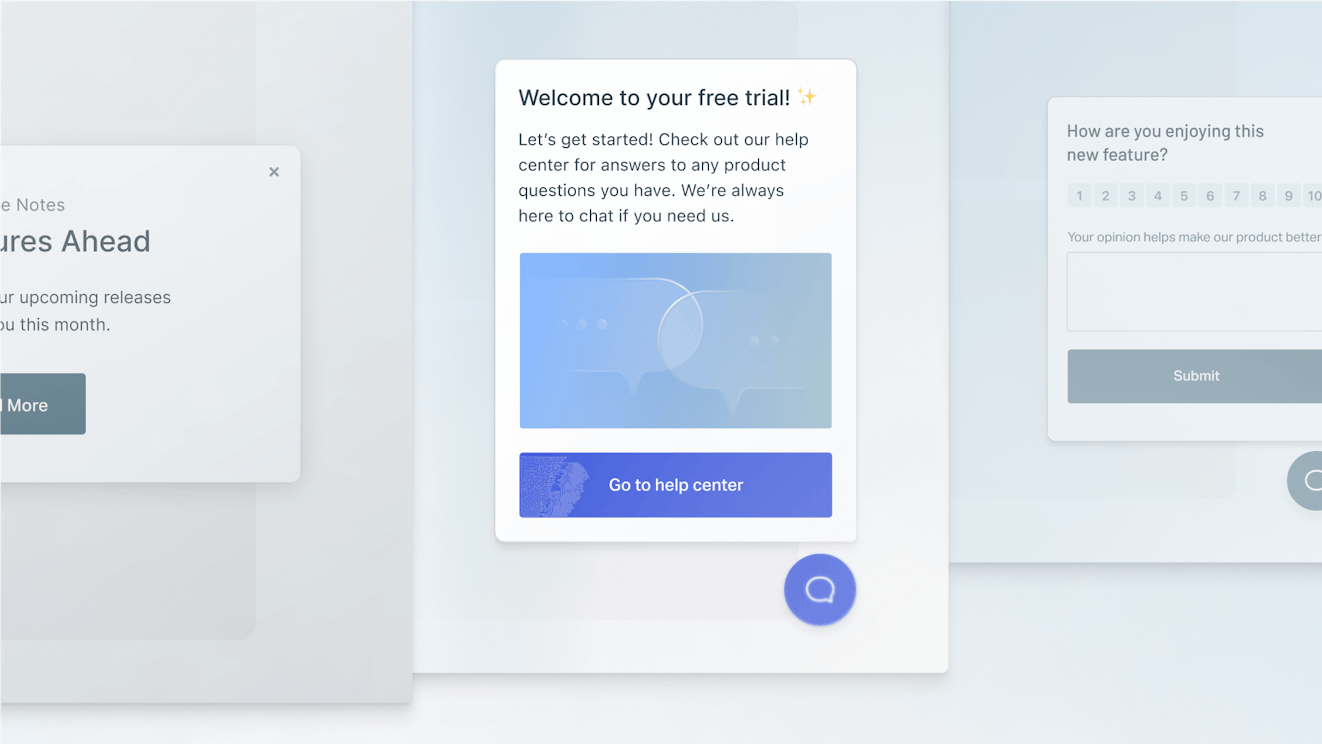
Collect feedback and take action
Another type of message available through Help Scout is microsurveys — short surveys that measure customer sentiment in the moment vs. after the fact.
Help Scout offers six survey types, including NPS, multiple-choice, emoji-based, or text feedback, which you can surface using the same segmentation conditions used for other message types.
Each survey comes with its own reporting dashboard with the ability to launch a follow-up conversation with respondents right from the responses tab.
Create an avenue for self-service
Part of setting up your customers for success is ensuring that they have the information they need to get the most out of your product. Docs, Help Scout’s knowledge base builder, lets you set up a help center in minutes, with no coding required.
Docs’ newly updated editor makes it easy to create media-rich documentation for your product and get answers to your company’s FAQs online. In addition, you can also use docs to create an internal knowledge base for your team, providing them with a centralized location to review best practices and operating procedures.
Once published, customers can view Docs articles on your Docs site or via an embedded Beacon, and employees can browse documentation from within all conversation windows.
Use data to prevent churn and help your customers succeed
Help Scout provides reporting dashboards for all of its channels — email, live chat, Docs, Messages, and microsurveys. Use the data collected in Help Scout to guide customer-focused content like blog posts, webinars, and email campaigns. In addition, use conversation tags to help you identify trending issues and at-risk customers before they churn.

Work together and see big results
While they may lead the way, your customers’ success isn’t dependent on CSMs alone. Building strong client relationships is a team effort, which is why all Help Scout plans are contact based and include unlimited users.
In Help Scout, a contact is someone who received a reply from your team or had their question resolved by AI Answers in a given month. Multiple conversations with the same person count as one contact.
In other words, Help Scout has no per-seat fees. We earn revenue when you help customers, so bring the whole team!
Price: Free plan available. Paid plans start at $25 per month.
2. ChurnZero
Best customer success software for product walkthroughs.
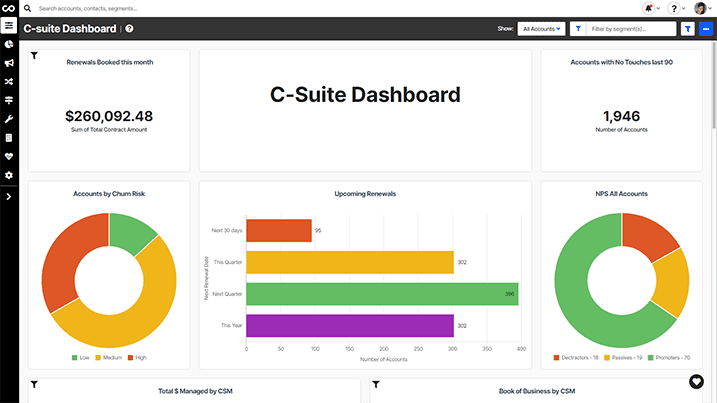
ChurnZero is a customer success platform that can help success teams at SaaS companies prevent churn before it happens and increase expansion through reporting and analytics, feedback collection, and proactive outreach.
The platform has a Command Center, which gives you timely information like upcoming client meetings and displays your account’s customer health scores — a measurement designed to let you know if a customer is showing signs of churning so that your team can take action quickly.
ChurnZero’s segment analysis tool can help you target your efforts based on metrics like product usage, health score, or where a client is in their customer journey. Use these customer segments to target in-app communications, set up automations, and collect user feedback.
The platform doesn’t just have tools for your team. Success Centers allow you to communicate with customers more effectively, putting everything having to do with their account in one place for easy access. Another feature, WalkThroughs, lets you create in-app guides for product onboarding and adoption.
Though a robust service, ChurnZero is missing some communication channels. For instance, there isn’t a native incident tracking component to the platform. Luckily, it does offer integrations with platforms like Help Scout, which will let you pull customer conversations into ChurnZero to provide contact visibility to your team.
Price: Contact for a demo and pricing.
3. Planhat
Best customer success software for centralizing customer data.
Planhat is an excellent choice for those interested in centralizing their customer data. It supports integrations with CRMs like HubSpot and Salesforce, customer communications software like Help Scout, Zendesk, and Intercom, customer engagement software like Mixpanel and Panda, and automation platforms like Zapier. Connecting all of your tech stack through Planhat gives you the 360° view needed to help you better understand your customers and help them succeed.
The platform has a lot of similarities to tools like ChurnZero. Planhat lets you build customer health scores to help watch for drops in engagement, and you can set notifications and alerts to ensure that you never miss a change. You can also create playbooks, build out customized reporting dashboards, and create customer portals to better collaborate with your clients.
One difference from ChurnZero, however, is that Planhat has a customer success inbox feature. You can create shared inboxes like success@ or support@ or link to your external Gmail or Outlook accounts. Having a shared inbox for your team helps with efficiency and transparency, allowing you to serve your customers better.
Price: Contact for a demo and pricing.
4. HubSpot
Best free customer success software.

While HubSpot may not immediately come to mind as a tool for customer success, there are ways to use it as one. The CRM platform has many features that can help your success efforts. Sales Hub offers insight into the deal pipeline and renewal process, while Service Hub, the company’s help desk, can provide visibility into your customers’ experiences with your products. In addition, other HubSpot tools, such as Marketing Hub, can help with content aimed at customer education, such as email campaigns.
One area where HubSpot’s native features may come up short is product engagement analytics. While you may get a good idea of your customer’s experience through ticket data, having more specific details about product usage can be invaluable. If having engagement data is essential to your team, HubSpot does support integrations with many popular customer engagement solutions.
Note: You can purchase Service, Sales, and Marketing Hub plans separately, or you can subscribe to all Hubs via the CRM Suite plan.
Price: Free trial available. Paid CRM Suite plans start at $30 per month (includes two users for Sales and Service Hubs).
5. Totango
Best customer success software for goal-driven teams.
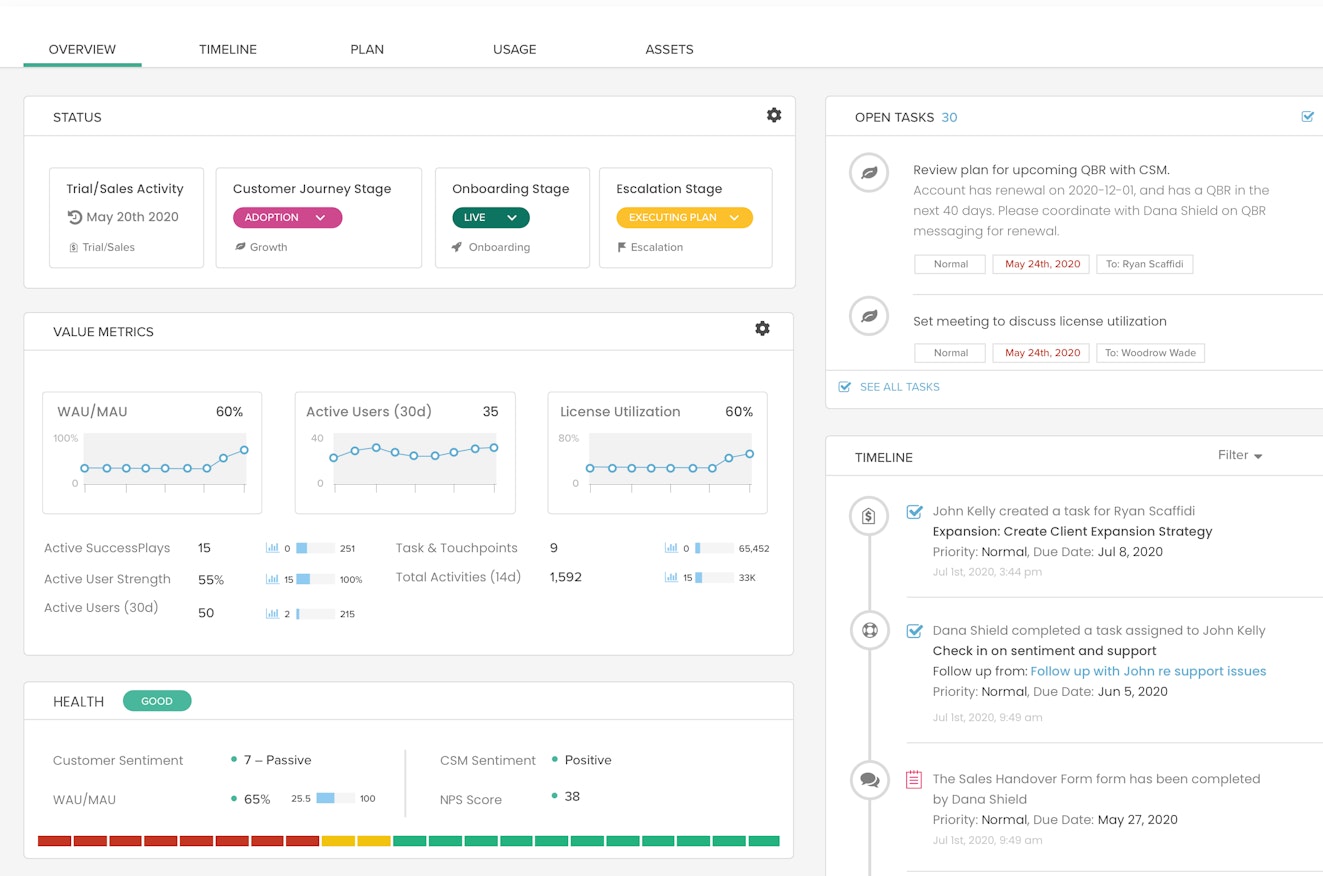
Totango is a customer success platform with everything you need to meet your team’s goals. One of the most interesting features of the platform is its SuccessBLOCs — customer journey templates that provide you with a road map for achieving a specific outcome.
For example, if your team’s current objective is to convert “freemium” users to paid accounts, you can choose Totango’s Convert Freemium SuccessBLOC. The kit comes with a set of suggested goals, KPIs, customer segments, and campaigns. In addition, the BLOC includes a set of SuccessPlays — automatically triggered workflows to help your success managers know where to focus their efforts.
Teams can switch SuccessBLOCs or build out their own flows at any time to match company objectives. The platform also offers the ability to create customer portals and outcome success plans, provides a comprehensive health score, and integrates with other popular customer-related software like help desks.
The platform offers a free plan, which is great for small companies just starting their success efforts. The only hiccup is that it only comes with one user seat, so teams requiring additional access must upgrade to a paid plan.
Price: Free trial and plan available. Paid plans start at $249 per month (includes two users).
6. Custify
Best customer success software for team collaboration.
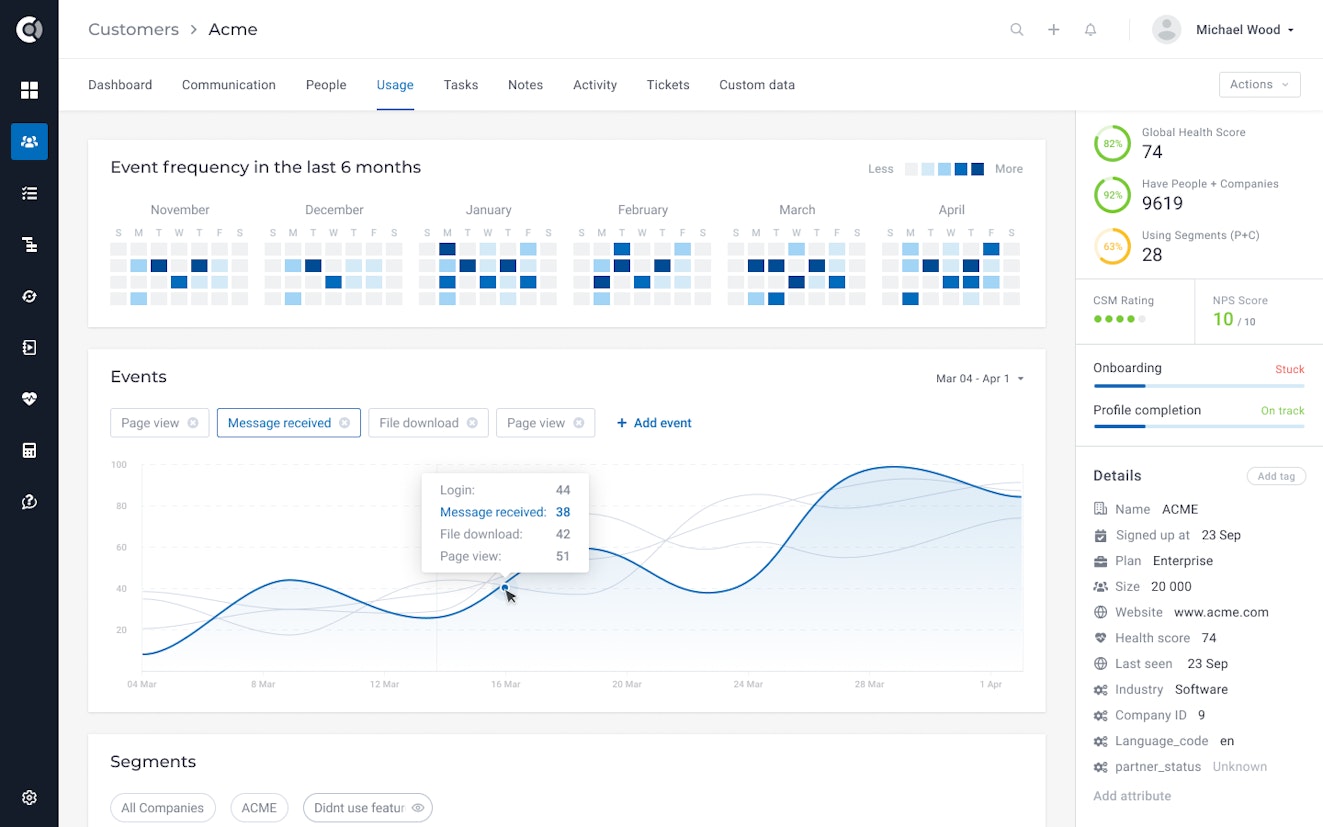
Custify is a success platform aimed at helping SaaS companies encourage product adoption and reduce customer churn. It has all of the usual suspects when it comes to features: customer dashboards, opportunities for automation, and customer health scores, which can help you stay on top of at-risk accounts.
Custify also has robust reporting dashboards and supports integrations with popular CRMs and help desks, and its recently released customer feedback tools allow you to send out NPS and CSAT surveys.
The solution can be a good one for growing customer success teams. They offer a rating system that allows teammates to leave notes regarding specific accounts and a rating of the customer’s current satisfaction level, making it a perfect tool for collaboration.
Price: Contact for a demo and pricing.
7. SmartKarrot
Best customer success software for those interested in AI.
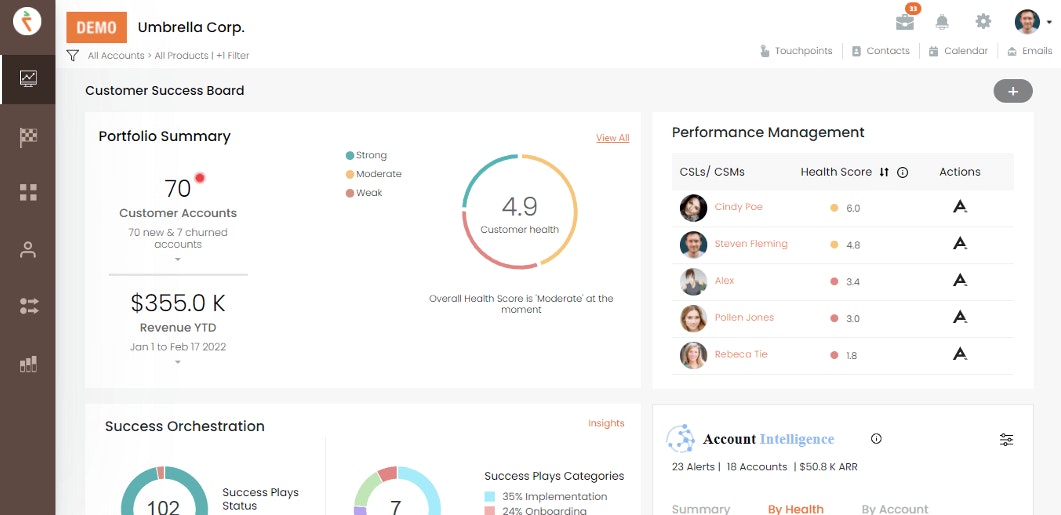
SmartKarrot is a customer success platform that is full of great features. From comprehensive customer dashboards to automated playbooks to product analytics, SmartKarrot has it all.
One thing that sets SmartKarrot apart from the competition is its features that rely on artificial intelligence (AI). In particular, the SmartKonversations tool is unique. It uses natural language processing to analyze your team’s customer calls. Once the call is over, the AI generates a summary, lists the call length, and provides a transcript. The feature can also track keywords used in calls, analyze the transcript for customer sentiment, and identify risks and opportunities.
Beyond the features mentioned above, SmartKarrot offers a customer health score, an early warning system to notify your team of important customer milestones, NPS tracking, customer segmentation tools, and the ability to create email campaigns directly within the platform.
Price: Contact for a demo and pricing.
8. Gainsight
Best customer success software for enterprise companies.
Gainsight is a powerful platform used by well-known companies like General Electric, Notion, and Seismic. It offers three products, focused on customer success, product experience, and community engagement.
The customer success offering is robust, offering customer scorecards, health scores, proactive playbooks, email templates, note and email logging, and reporting dashboards. In addition, Gainsight can integrate with other tools to provide even more insight into your customers.
Beyond their explicit customer success tool, teams might also find potential in other Gainsight offerings. Their product experience tool helps teams measure user activity within your product, conduct NPS surveys, create in-app product guides, and more. Gainsight’s community engagement solution, inSided, lets you create knowledge bases and community forums, which success teams can leverage to help with product education.
Unfortunately, there is no ability to self-initiate free trials for any of the offerings except for the product experience solution. There also aren’t any prices listed on the site or indications of whether they offer a package that covers all three products. If Gainsight sounds like a good fit for your company, you’ll need to reach out to their sales team for more information.
Price: Contact for pricing.
Tips for choosing the best software for customer success
As you can probably tell from these recommendations, customer success management tools are far from one-size-fits-all. Sure, there may be overlapping functionality and feature sets, but not every platform will be right for your business.
Here are four tips to keep in mind as you start to narrow down your list.
1. Outline your customer success goals and objectives
The very first thing you should do is consider the question, “What does customer success look like at our company?”
In the case of SaaS companies, your team may have OKRs (objectives and key results) like converting a certain amount of trial customers to paid during your current quarter or shortening the time it takes for a customer to fully onboard with your company.
By contrast, a company that produces a smart device may give its success team goals of increasing product engagement and reducing the number of return requests.
Whatever your team is aiming to do, you’re going to need a platform that can help you get there. Knowing your goals upfront will keep you from wasting time on software that doesn’t meet your business needs.
2. Decide which features align best with those goals
Once you have a list of goals or OKRs, consider the strategies you hope to employ to meet them. This should help you get an idea of what kind of features you’ll need in order to be successful.
For instance, the SaaS company above might need a knowledge base, proactive messaging, and two-way communication tools (email, live chat, social, etc.) to help provide product education to its customers.
Meanwhile, the smart device business might need engagement analytics or feedback collection software to help determine where customers are experiencing pain points.
3. Think about cost
While some customer success platforms are expensive, not all of them are. Most companies offer free trials of their software, and a few even offer access to a free plan.
Before you get serious about signing up for a service, know your budget and be prepared to stick to it. No matter the range, there’s a platform that can meet your price point.
4. Try them out!
The only way to know if a customer success platform will work for your team is by testing it. Narrow down your list, sign up for a few free trials, and ask yourself the following questions:
Is this software easy to use?
Does this tool have all of the features we need to be successful?
Do I know how to get help when I’m having trouble with the platform?
Beyond trials, check out the company’s help center, talk to their customer support team, or sign up for a live session or demo where you can get any outstanding questions you may have answered in real time.
Get started with customer success software
When you’re ready to start putting your list of customer success software options to the test, consider Help Scout. We offer free trial, no credit card required.
Explore the product, try out the features, and if you have any questions, let us know!








